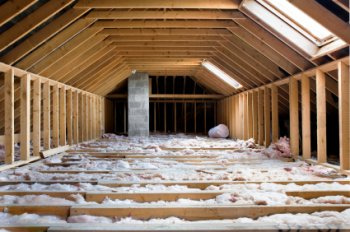Home Building Articles
Spray Foam Insulation: Tips and Best Practices

June 23, 2009
A large percentage of heat escapes through the attic and the walls of a home. However,
a new approach to insulation can make a big difference.
In order to build a better thermal envelope, we need to look at the second law of
thermodynamics. This law states that heat flows in one direction, from a warm space
to a cold one. For example, warm air inside a home will flow to the cooler air outside
during winter months.
Fiberglass batt insulation helps prevent this from happening, but there's a better
method for preventing heat loss-one that is easy to install and is within your budget.
The best practice for insulating is to use spray foam insulation to fill the spaces
between the framing studs in the walls and attic. Spray foam insulation is non-toxic
and typically has a lifetime guarantee. It expands to about 100 times its original
volume, so it fills in air gaps unlike standard fiberglass insulation. Over time,
as the house expands and contracts, so will the foam insulation. This eliminates
cracks and spaces for warm air to escape.
The most common insulation method is to sue fiberglass insulation batts, which are
placed between the studs and stapled into place. The drywall is then nailed over
it, creating a straight wall. Although this is an acceptable method, it does not
create an airtight seal, so heat can blimp. That's a lot of air and a lot of wasted
energy and money!
By using the better practice of spray foam insulation in walls and attics, you can
create a better air-tight envelope. This gives an advantage over common batt insulation
in both efficiency and cost.
*Source: HGTVpro.com